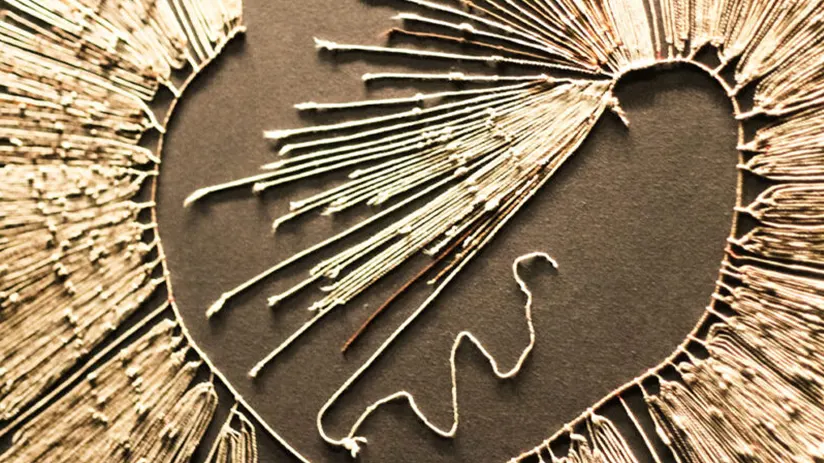Just as some ancient cultures had their languages and registration systems, the Incas were no exception. The ancient Inca Empire did not have a written system or language to give us an idea about their lives. We can only rely on those stories and customs that were passed orally.
As a result, the Incas did not record much of their history in writing. The Quipu can reveal some exciting findings. In this form, the Empire adopted a unique and rather ingenious system of recording information.
The Quipu was an exceptionally creative and original counting system based on ropes and knots. They kept the Inca administrative account there and even recorded some crucial facts. Andean cultures before the Incas have used quipus since 2600 B.C., and researchers are still studying them today.
Together with the Machu Travel Peru team, we want to tell you more about this unique registration system. For this, we have prepared an article about this central topic.
All you need to know
- The Quipu, a forerunner of laptops
- The meaning
- History
- Functions
- The Quipucamayoc
- How to read
- Types
- New findings
- Models that survived
The Quipu, a forerunner of laptops
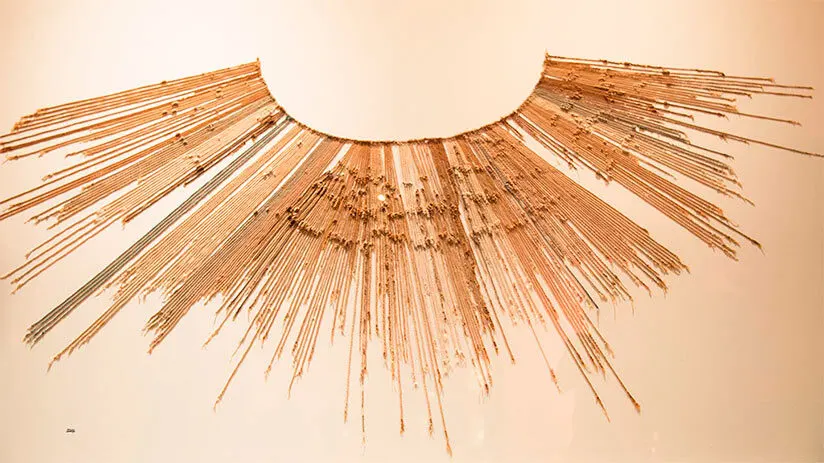
The Quipus were a number of knots used to keep records of various things. The Incas used them, although they adopted them from other ancient Andean cultures that they conquered. Their primary function was maintaining records and communicating information.
The Quipu shone without the Inca’s alphabetical and systematic writing. Some experts think this device was similar to early laptops. Portable and able to perform accurate calculations. It is undoubtedly one of the archeological treasures in Peru, leaving us enchanted with the mysteries surrounding it. It used various colors, ropes, and knots. This Inca instrument was the device that managed. This simple calculation device could be considered a forerunner of laptops because it was effortless to carry. And not only that, but it also had a high.
It was easy to carry around and precise in its calculations. Additionally, people could use it for various mathematical tasks. It is undoubtedly one of the archaeological treasures in Peru, and its mysteries enchant us. It used multiple colors, ropes, and knots. We tied the knots differently and at different heights on the base rope to differentiate what we recorded.
The Inca instrument could record dates and statistics, but surprisingly, it could also record stories (according to recent studies). The Quipus represented essential parts of folk tales and poetry, serving as a simple alternative to written language.
Some scholars believe that ancient people recorded the information like a cuneiform tablet or symbols painted on papyri. Instead of using painted or printed symbols, the Incas used different colored knots to convey their ideas.
The meaning
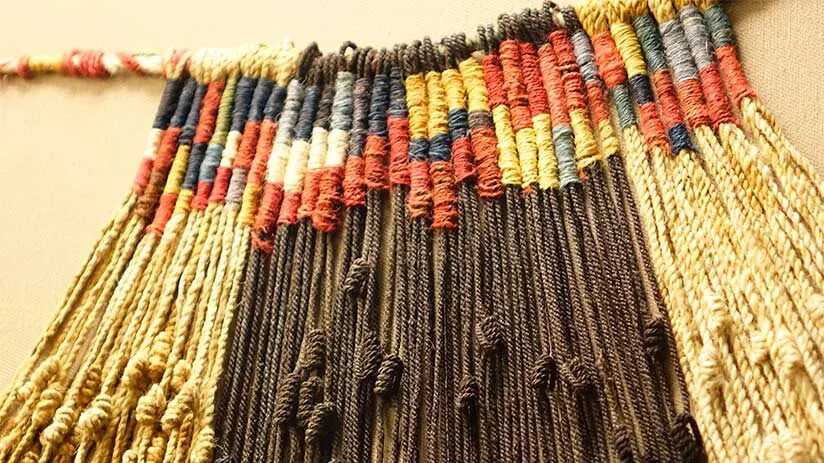
The device comes from a word in the Quechua language, Khipu, also called Quipo. This word, translated into Spanish, can mean “knot.” Indeed, the process of deciphering these systems is still ongoing. However, scholars assume that the information is stored in the color of each cord, the length of the cord, the type of knot, the location of the knot, and the twisting direction of the knot.
Quipu laces are often braided in color matching and sometimes have individual cotton or wool yarns distinctively dyed. Also, all the cords are mainly connected by a single horizontal thread. However, some elaborate examples with multiple subsidiary cords have been found. These start from the horizontal base in vertical or oblique directions.
History
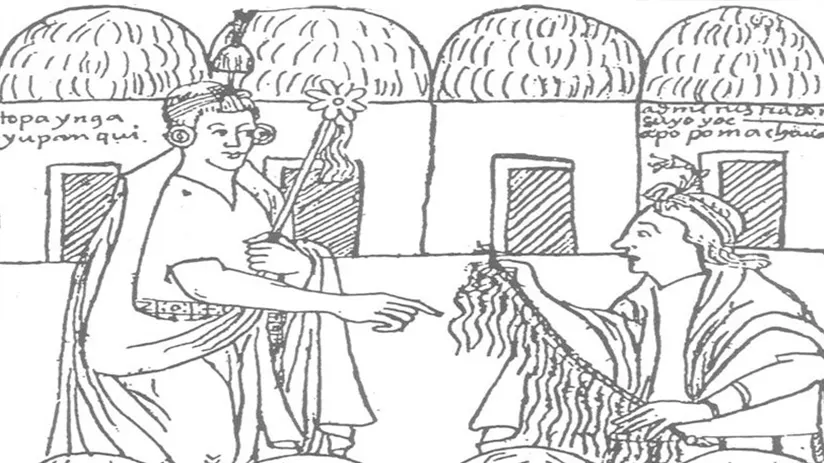
The Incas were the last culture to use this instrument. However, as numerous Inca techniques predated the Empire, the Quipu is no exception.
This method dates back to 2600 BC until 1532 A.D. Remember that the Incas set out from a valley to conquer numerous Sierra cultures. These cultures had endless languages, topographies, and resources. One of the few ways to manage an Empire of this magnitude is by keeping detailed records of the different areas.
The 16th-century Inca Garcilaso de la Vega historian mentions that relay riders carried. These riders were called Chasquis. They brought the encoded information through the long Inca trail system (Qapaq Ñan). In this way, the different Inca rulers were kept up to date with news related to the Empire and its most distant towns.
Once the conquest arrived, the Spanish destroyed thousands of Quipus, as with other objects of Inca importance. They introduced their own spoken and written language, Spanish. Displacing to oblivion. Only about 600 of these are believed to remain until modern times, many found in excavations and different ancient ruins in Peru. Fortunately, some were found in local Andean communities where people still live. Nowadays, all these are stored in regional and international museums. For this reason, the Incas were one of the last cultures to use this registration system.
Functions

Historical reports show that the Inca Empire used knotted cords called Quipus to track tributes and production levels. They recorded important information, including details about the amount of goods produced and the tributes collected. Some of these may also have represented maps of the Inca road network.
Today, many scholars are still studying its use as a record system for stories, legends, and myths. Therefore, the Quipus may have functioned as a mnemonic device to help oral historians and legends.
Some think it might have been a way to remember the essential family trees in Inca society. People in the Peruvian Andes used these methods before the Inca Empire, so the Incas started using them too.
The Quipucamayoc
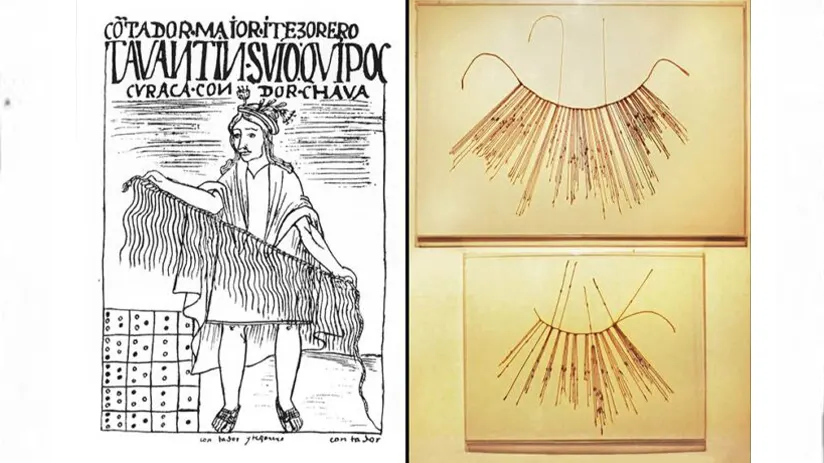
According to the Spanish records, specialists kept and maintained the Quipus reading them. They called them Quipucamayocs or Khipukamayuq.
Even a few shamans learned to understand the complexities of the knot system. Apart from them, no one else could and knew how to read this instrument. Because of this, we see that it was not a technology shared by everyone within the Inca community. It is not surprising that an oral record accompanies the physical record. This maximized Quipu’s potential. These groups of professionals and teachers, known as Khipu Kamayuq or Quipucamayocs, emerged for this.
They remembered oral accounts and explained facts about the Incas. Families passed down the tradition of recording from generation to generation because it was a hereditary practice. For this reason, it was a job with a lot of pressure and destined only for a few. Severely punish any mistake or memory error.
Nowadays, we consider the Quipucamayocs equivalent to our current accountants. One could also view them as secret agents with crucial and exclusive information. For instance, most Machu Picchu tours suggest that the citadel may have been a neighborhood where mainly women lived. Someone could have extracted this information from a record.
The Quipucamayoc was in charge of creating and deciphering the quipus. The Empire sent these guardians to different sectors to collect and retrieve important information. For more than 4,000 years, these masters played a leading role in the Inca Empire.
How to read
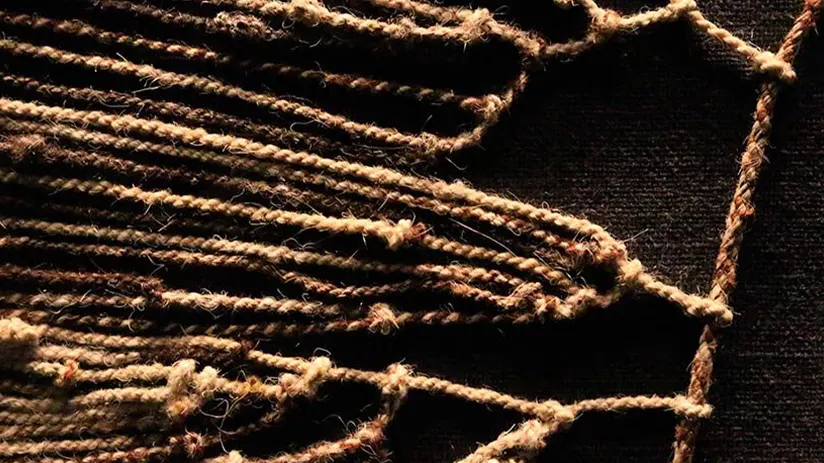
The Quipu is generally based on a horizontal rope; different colored ropes are hung from this base with numerous knots each. The ropes can be made of cotton or wool. The largest has more than 1500 threads, which can be woven in various ways, suggesting a meaning within each register. Different shades of color are believed to carry specific meanings as well. And, of course, the knots are supposed to have the central meaning within these records: either the position of the knot, the type of knot, the number of knots, and the sequence in which they are presented.
Also, the mix of these colors, knots, and ropes is believed to have many potential meanings. This record is much more than just a way of counting cattle.
The counting method was based on a decimal position system. Generally, the most significant decimal used was 10,000. This Inca system was very similar to our current system. Units were indicated at the knots furthest from the ropes.
At the same time, the highest decimals were in the initial part of the strings, close to the main rope. It is also known that the knot represents various meanings. In addition, examples were found where secondary chains could exist from a single rope. So, it is supposed to be considered a type of exception or separate importance. Finally, an individual Quipu could join others in a specific form and sequence to give it a different meaning.
How to read it?
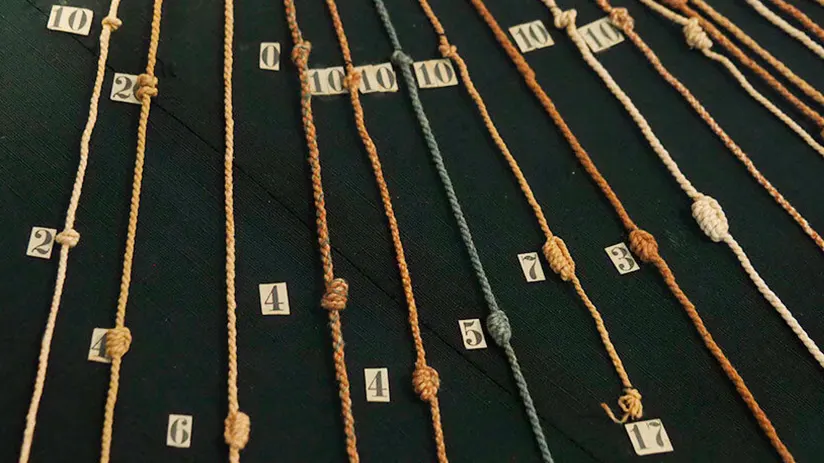
Knowing how to read the knots is the method of using them. Deciphering the content that a Quipu keeps is true Peruvian Art. Fortunately, it’s not as complicated as you think.
There are three different knots. The knots represent the quantity (expressed in decimals) in this form. The closer to the base chord, the higher the value. The further away from the main rope, the lower the value. A space separates the knots. In this form:
The single knots can go:
- Ten Thousand
- Thousand
- Hundreds
- Tens
The long knots:
- These depend on the turns of the rope that the knot has
The “eight” knot:
- This means one
In this sense, if you find in a rope a group of two single knots (close to the base), followed by a space, and after a long knot with five turns, we can interpret it as the number 25.
On the other hand, if we find, in a rope, a group of 4 single knots, followed by a space, after a group of 3 single knots, followed by a space, and, finally 3 “eight” knots, we can interpret it as the number 433.
A final example is if we find a group of 7 single knots, followed by a space. After a group of 5 single knots, followed by a space, after a group of 3 single knots, followed by 6 “eight” knots, we can interpret it as the number 7,536.
Types
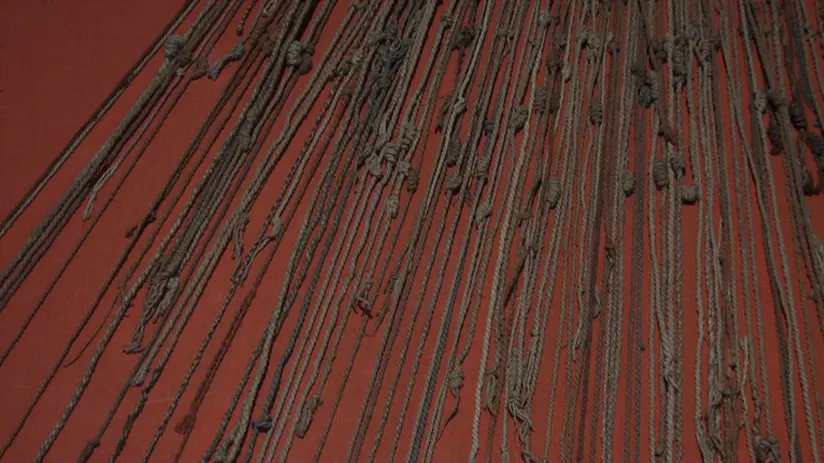
The chronicler Guaman Poma de Ayala explained life in the Andes and the Hispanic and colonial periods. In it, he narrates fundamental information through graphics. The quipus were knotted strings with different colors and positions. They used them to keep track of numbers and information.
In which he narrated fundamental information using graphics. Where it is mentioned that there were the following:
- Beads: These were the classical, which allowed people to keep accounts.
- Narrative: These not only had information about numbers. They could also record important events, stories, and even battle strategies.
- Control: The Inca empire used control to manage villages, resources, population, and tributes. They also tracked important information and maintained order.
New findings
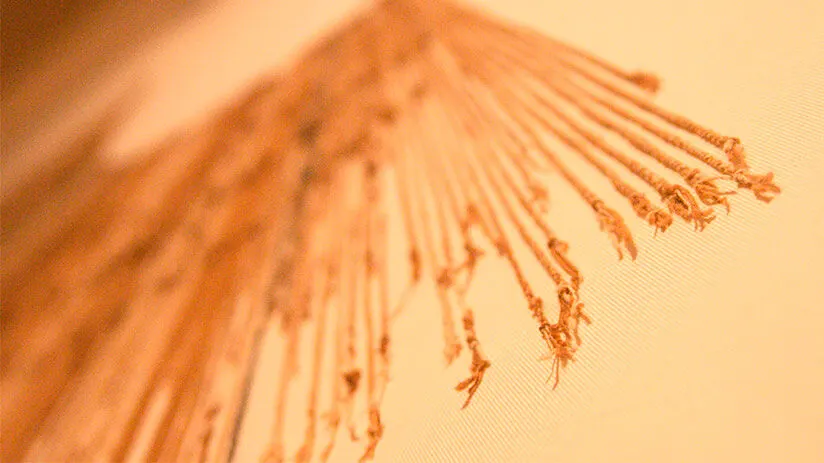
Over the last few years, discoveries have shed new light on the Quipu. Scholars have challenged the traditional way of looking at this ancient inca recording device, which is believed to be much more than just a memory aid system.
It is even suggested that it was related to different narrative registers. Therefore, it could also have been a viable alternative to written language. However, it is believed that this evolution of the Quipu took place during the last years of the Inca Empire.
Many ancient Quipus of the Inca were purposely destroyed when Atawalpa took power and sought to clean the slate and was also to record imperial conquest and royal bloodlines.
They were ideal for recording the census data for provinces, i.e., total numbers and specific numbers. However, Andean people still use this instrument up and down South America, most often by shepherds and herders, to record livestock numbers. As a result of these actions, there are only several hundred examples. Then, following the Spanish conquest, even more results: many ancient Inca instruments were purposely destroyed.
Models that survived

Unfortunately, not many examples have survived the passage of time. The Quipus are so scarce that when Hiram Bingham visited Machu Picchu in 1911, he did not find any of them in his excavation.
Inca Atahualpa became the leader of the Empire after a civil war with his brother Huascar. During this time, they destroyed to erase the history of Inca Huáscar, the half-brother and rival of the Inca. The Spanish conquest also destroyed the other surviving examples.
The conquerors were highly suspicious of the information these records could contain. Because of this, exceedingly few models and examples of these incredible records have survived. Only a few hundred examples remain today. Happily, and despite this, many Andean cultures continue to use it to record the number and information. In Peru and Bolivia, herders and rural residents frequently use this method to count their livestock.
This method helps them keep track of the number of animals they own. People who live in rural areas commonly use it in these regions. You can also find them as Peruvian souvenirs in many local handicraft markets along Peru.
“WE LEARN THE ROPE OF LIFE BY UNTYING ITS KNOTS”
As you will see, the Quipus are still one of those fascinating mysteries of the ancient Inca Empire. If you want to know more about the captivating examples of this, you can visit the many museums in Peru. These excellent records of information can be seen in various museums. We hope together with the team of experts from Machu Travel Peru has been helpful. If you want to know more about our different options in tourism in Peru and visits to museums, you can consult with our qualified advisers. Our team will be happy to help you make the trip of your dreams come true.
